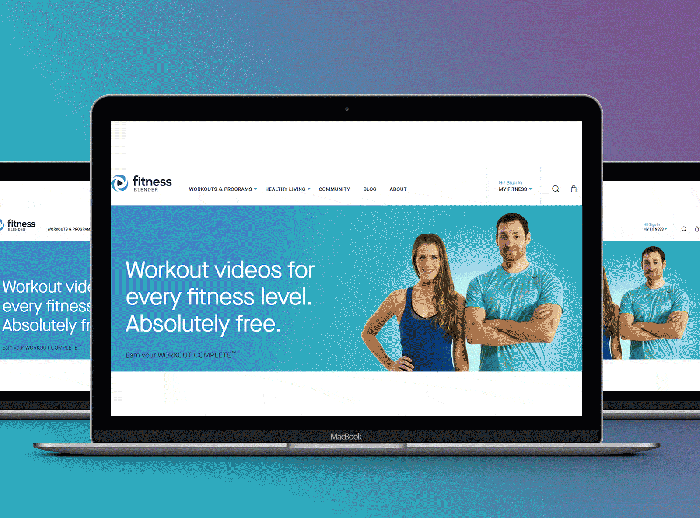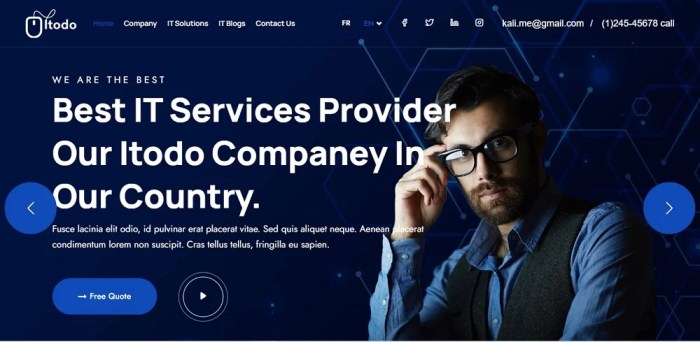Website Design Ideas: Trending Concepts and Tips for 2022 kicks off with a bang, diving into the latest innovations and strategies shaping the digital landscape. Get ready to explore cutting-edge design trends and unleash your creativity!
Whether you’re a seasoned web designer or just starting out, this guide will provide you with the inspiration and insights needed to create visually stunning and user-friendly websites. Let’s dive in and uncover the secrets to successful website design!
Website Design Ideas
In the ever-evolving world of web design, staying up-to-date with the latest trends is crucial to creating visually appealing and user-friendly websites. Let’s explore some innovative website design concepts that are trending in 2022 and the importance of user experience in website design.
User Experience Optimization
User experience (UX) plays a vital role in the success of a website. In 2022, there is a strong emphasis on optimizing user experience to ensure visitors have a seamless and enjoyable interaction with the site. This includes intuitive navigation, fast loading speeds, mobile responsiveness, and engaging visuals. Implementing user-friendly features such as chatbots, personalized content, and interactive elements can enhance the overall user experience.
Unique Navigation Menus
Navigation menus are a key component of website usability. In 2022, designers are getting creative with navigation menus to improve user engagement and make it easier for visitors to find what they’re looking for. Examples of unique navigation menus include hidden menus, mega menus, sticky menus, and hamburger menus. These innovative menu designs not only enhance usability but also add a touch of uniqueness to the website’s overall aesthetics.
Responsive Design
With the increasing use of mobile devices, responsive design has become a non-negotiable aspect of modern websites. In 2022, websites must be optimized for various screen sizes and devices to provide a consistent user experience across platforms. Responsive design ensures that the layout, content, and functionality of the website adapt seamlessly to different screen sizes, resulting in improved user satisfaction and retention.
Color Schemes and Fonts: Website Design Ideas

Choosing the right color schemes and fonts is essential in creating visually appealing and engaging websites. The colors and typography used can greatly impact the overall look and feel of a website, as well as influence user experience and perception.
Color Psychology and Emotions
Color palettes can evoke specific emotions and set the tone for a website. For example, warm colors like red, orange, and yellow can create a sense of energy and excitement, while cool colors like blue and green can evoke feelings of calmness and trust. It’s important to consider the target audience and the message you want to convey when selecting color schemes for a website.
Typography and Readability
The choice of fonts plays a crucial role in readability and user engagement. Fonts should be easy to read, especially on different devices and screen sizes. Serif fonts are often used for a more traditional and formal look, while sans-serif fonts are favored for their clean and modern aesthetic. It’s important to strike a balance between creativity and readability when selecting fonts for a website.
Creating a Cohesive Color Scheme
When creating a color scheme for a website, it’s important to choose colors that complement each other and create a harmonious overall look. One popular method is to use a primary color as the dominant hue, a secondary color for accents, and a neutral color for backgrounds and text. Consistency in color usage across the website helps establish brand identity and enhances user experience.
Examples of Exceptional Typography Design
Some websites excel in typography design by using a combination of fonts, sizes, and spacing to create a visually appealing and easy-to-read layout. Websites like Medium, Vogue, and Airbnb are known for their exceptional typography design, which enhances the overall user experience and reinforces their brand image.
Visual Elements

Visual elements such as images, videos, and animations play a crucial role in website design by enhancing the overall user experience and capturing the attention of visitors. These elements help convey information, evoke emotions, and create a visually appealing website that stands out.
Use of Whitespace
Whitespace, also known as negative space, is essential in web design as it helps improve the overall aesthetic of a website by providing breathing room for content. It allows for better readability, helps in focusing attention on key elements, and creates a sense of balance and sophistication. Utilizing whitespace effectively can make a website look clean, modern, and visually appealing.
Optimizing Images for Web Use
When optimizing images for web use, it’s important to strike a balance between quality and file size. To ensure fast loading times and optimal performance, images should be compressed without compromising quality. Use image editing tools to resize images, choose the right file format (such as JPEG or PNG), and optimize the image alt text for purposes. By following these tips, you can enhance the user experience without sacrificing image quality.
Visual Storytelling in Websites, Website Design Ideas
Visual storytelling is a powerful technique used by websites to engage users and communicate a message effectively. By using a combination of images, videos, animations, and graphics, websites can create a compelling narrative that captures the attention of visitors and conveys information in a memorable way. Examples of websites that effectively use visual storytelling include National Geographic, Airbnb, and Patagonia. These websites leverage visual elements to tell stories, evoke emotions, and create a unique user experience that resonates with their audience.
Interactive Features
In the fast-paced digital world, incorporating interactive features into a website can greatly enhance user engagement and overall user experience. These features can range from chatbots and quizzes to gamification elements, keeping visitors entertained and interested in exploring the site further.
Chatbots and Quizzes
Interactive chatbots provide real-time assistance to users, guiding them through the website and answering any questions they may have. Quizzes, on the other hand, can be a fun way to engage visitors and collect valuable data about their preferences and interests.
- Chatbots offer personalized assistance and support, making the user experience more interactive and user-friendly.
- Quizzes can be used to gather feedback from users, tailor content recommendations, and increase user interaction with the website.
Micro-interactions
Micro-interactions are subtle animations or visual cues that respond to user actions, such as hovering over a button or scrolling down a page. These small details can enhance user engagement and create a more dynamic and engaging user experience.
- Micro-interactions provide instant feedback to users, making interactions with the website more intuitive and satisfying.
- They can also add personality and charm to a website, making it more memorable and enjoyable for visitors.
Gamification Elements
Integrating gamification elements, such as progress bars, badges, or rewards, can turn the user experience into a fun and engaging game-like journey. These elements can motivate users to explore more content, participate in activities, and stay longer on the website.
- Progress bars can visually indicate how far a user has come in completing a task or reaching a goal, encouraging them to continue their journey.
- Badges and rewards can create a sense of achievement and incentivize users to interact more with the website, ultimately increasing user engagement and loyalty.
Examples of Exceptional Interactive User Experiences
Some websites excel in providing exceptional interactive user experiences by incorporating innovative interactive features. For example, Airbnb uses chatbots to assist users in finding the perfect accommodation, while Buzzfeed engages visitors with entertaining quizzes and interactive content.
- Netflix utilizes personalized recommendations and interactive elements to enhance the user experience and keep viewers engaged for longer periods.
- H&M’s website features a virtual dressing room where users can try on different outfits, providing a unique and interactive shopping experience.
